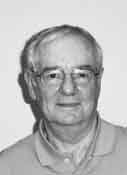 | John Rawson, Consultant, is part of the team of Wichita sales staff and RF radio technicians that is grouped with shops located in Lincoln and Omaha, Nebraska. FirstWireless, Inc. offers client consultations and demos, service, maintenance and installation, radio rentals, FCC licensing, GPS tracking and warranty administration. FirstWireless, Inc. specializes in the sales, service and rental of two-way radios, accessories and applications.
As a Premier Service Partner with Motorola, the trained sales staff and radio technicians keep customers up-to-date with the most current technical advances in radio systems and devices. Visit www.firstwirelessinc.com for more information or call at (316) 265-2290. |
Electronics
2010-08-01 13:01:00
Digital future for professional two-way radio: series (part two)
Question: Why Two-Way Radio?
Answer: Before we look at the advantages of digital, there’s a more fundamental question. With alternative and emerging technologies — such as cellular, push-to-talk over cellular, and Voice-over-WLAN–is there any reason for enterprises to stick with two-way radio at all?
While there’s no single answer to this question for every organization, two-way radio offers certain advantages that make it the clear choice for the vast majority of mobile professionals who require an affordable, flexible, highly reliable solution — along with the power and range available only in licensed bands. Advantages of two-way radio include:
•Low total cost of ownership. Two-way radio requires a small up-front investment, with no recurring monthly fees. A two-way radio solution can typically pay for itself in less than 18 months compared with cellular or public carrier solutions that require recurring monthly fees.
•Customizable coverage and features. Two-way radio was developed and has continued to evolve to meet the specific needs of group-oriented communications and dispatch environments. The ability to tailor a two-way solution to meet the needs of businesses — with quick, reliable one-to-one, one-to-many and many-to-many communications — remains unequaled. Carrier-based solutions don’t provide comparable levels of customization and performance.
•Simple, reliable implementation. On-site and in-the-field solutions often require no infrastructure at all. Users simply turn on their radios and talk directly to each other — for miles — using rugged devices designed for everyday use in the most demanding environments. For group voice calls, with coverage requirements measured in miles rather than feet, two-way radio will continue to provide simplicity and reliability unmatched by cellular, VoWLAN and other competing technologies.
If you’re one of the tens of millions of professionals who rely on two-way radio today, it will continue to be your technology of choice tomorrow. And if you’re not a two-way radio user today, you owe it to yourself and your business to explore what two-way has to offer.
Digital Two-Way Radio: A Modern Solution for Modern Needs
Analog radio works well, and proves itself every day in countless deployments around the world. However, analog two-way radio has reached the limits of innovations. Virtually everything that can be imagined using analog radio has been already been attempted or achieved over more than a half-century of experimentation and innovation. Today, a new platform is required to break through to new levels of performance and productivity.
Many enterprises are finding they need more than the fundamentals that analog two-way radio delivers. Perhaps their licensed channels are becoming crowded and they need more capacity. Perhaps they need more flexible ways to communicate with users both inside and outside the work team. Perhaps they need access to data in combination with voice to improve responsiveness and productivity. Digital radio provides a powerful, flexible platform that professional organizations can adapt to meet these needs and more.
By migrating from analog to digital two-way radio communications, these organizations can fill many of these needs immediately and build a strong technical foundation for adding new functionality to meet new needs in the future.
Next month we’ll take a look at each of these enterprise mobility needs in turn, and explore how digital radio technology can support a more responsive and adept mobile team.
*Information obtained from “The Future of ProfessionalTwo-way Radio: Digital” whitepaper by Motorola. Email us at sales@firstwirelessinc.com for the complete paper delivered as a pdf file.
John Rawson, Consultant, is part of the team of Wichita sales staff and RF radio technicians that is grouped with shops located in Lincoln and Omaha, Nebraska. FirstWireless, Inc. offers client consultations and demos, service, maintenance and installation, radio rentals, FCC licensing, GPS tracking and warranty administration. FirstWireless, Inc. specializes in the sales, service and rental of two-way radios, accessories and applications.
As a Premier Service Partner with Motorola, the trained sales staff and radio technicians keep customers up-to-date with the most current technical advances in radio systems and devices. Visit www.firstwirelessinc.com for more information or call at (316) 265-2290.


